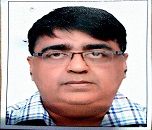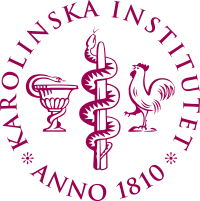Day :
- Clinical Pediatrics| Pediatrics Allergy and Infections | Pediatric Surgery | Pediatric Cardiology

Chair
Robert P Foglia,
University of Texas Southwestern Medical Center, USA

Co-Chair
Asif Hasan
Aligarh Muslim University, India
Session Introduction
Dawn S Hartfield,
University of Alberta, Canada
Title: Iron deficiency and neurological consequences for children
Time : 12:20-12:50

Biography:
Dawn S Hartfield has completed her Medical School in 1994 and obtained FRCPC in Pediatrics in 1998 from the University of Saskatchewan. She then completed a Master’s in Public Health Sciences (Clinical Epidemiology) in June 2008 at the University of Alberta. Her clinical research includes exploring the association between iron deficiency and neurological sequelae in children. She has published more than 20 papers in reputed journals on this and other topics. She has extensive leadership roles locally and nationally in the area of patient safety. She is the Medical Director of Quality, Edmonton Zone, Alberta Health Services, and Associate Professor of Department of Pediatrics, University of Alberta.
Abstract:
Iron deficiency is the most common micronutrient deficiency globally. The deficiency of iron most obviously impairs effective hematopoeisis, resulting in anemia, an indicator of severe iron deficiency. However, because of the importance of iron as a cofactor in biochemical reactions at the cellular level, defiiciency of iron impacts virtually every organ system, and in particular the central nervous system. Studies have found iron deficiency to be a contributing factor to many conditions including developmental delay, stroke, breathe holding spells, pseudotumor cerbri, swallowing dysfunction, and restless leg syndrome. The basic science and clinical research supporting the relationship between iron deficiency and these neurological sequelae will be explored. Iron deficiency is preventable; building awareness is important to assist in preventing these serious complications of what is often considered to be a benign nutritional problem. Clinicians attending this seminar will be able to apply this clinical information to their practice, and as well, this session will foster advocacy for prevention and treatment of iron deficiency and the neurological sequelae in our children.
Julide Sisman
UT Southwestern Medical Center, USA
Title: New perspectives on lenticulostriate vasculopathy in neonates
Biography:
Julide Sisman, MD, is a faculty at UT Southwestern Medical Center in Dallas, Texas and had obtained the degree of Master of Clinical Science. She joined the faculty in Neonatal-Perinatal Medicine at the UT Southwestern Medical Center after finishing her fellowship in Neonatal-Perinatal Medicine, at Albert Einstein College of Medicine. She completed her pediatric residency at Albany Medical Center, NY. She joined the UTSW faculty in 2009 after her extensive training in Pediatrics and Neonatology, and two years as faculty member at Baylor College of Medicine, Texas Children’s Hospital. She is board certified in both Pediatrics and in Neonatal-Perinatal Medicine.
Abstract:
Lenticulostriate vasculopathy (LSV) is a sonographic term given to “branching hyperechogenic lines” in the basal ganglia and/or thalamus seen on cranial ultrasound scans. LSV was first described on a neonatal cranial ultrasound in 1985, but the clinical importance, relevance to congenital infections, and long-term consequences of LSV on neonatal cranial ultrasound continues to be unclear. The incidence of LSV being reported has increased recently, which might reflect nothing more than a growing awareness of this finding on neonatal cranial ultrasound. On the other hand, improved ultrasound imaging technology may have enhanced identification, and there may be an increase in the frequency of risk factors contributing to the presence of LSV. We suspect that improvements in US technology have enhanced the visibility of the arterial walls in the supratentorial deep gray matter. Thus, thin and faint lenticulostriate vessels that are seen on neonatal cranial US using contemporary technology may not necessarily pathological. This review on LSV provides an update of current knowledge, with emphasis on definition and challenges that might have evolved with establishing the diagnosis during the last three decades. It has been accepted that lenticulostriate arteries supplying the deep gray matter are not normally visualized on the cranial ultrasound. For the first time in the literature, we challenged this notion in light of the recent technological advances in ultrasound imaging that have enhanced ultrasound imaging. Conflict still exists in terms of the clinical importance and long-term outcomes of LSV since the first case reported three decades ago. In this article, we also scrutinized the available evidence on clinical correlation of this neonatal ultrasound finding, discussed long-term outcomes, and provided strategies that may guide practitioners in clinical settings.
Syed Zafar Mehdi
Baqai Medical University, Pakistan
Title: Frequency and antimicrobial susceptibility pattern of microorganisms isolated from hospitalized infantile burn cases in a tertiary care hospital
Time : 14:20-14:50

Biography:
Dr.Syed Zafar Mehdi did his MCPS and FCPS in Pediatric Medicine from college of Physicians and Surgeons Pakistan. He is an Associate Professor of Pediatrics in Baqai Medical University Karachi. During last 18 years in this profession, Dr. Zafar has worked with children suffering from protein calorie malnutrition, infectious diseases and neonatology. He has played an important role in promotion and support of exclusive breast feeding for first six months on which he has published several papers and has given various presentations. Dr. Zafar is also a consultant of Pediatrics at Patel Hospital Karachi. Patel Hospital established Pakistan’s first separate 50 beds burn unit with burn ICU. Dr. Zafar is a member of burn plastic surgery team. His several papers have been published on infantile burn. He has raised the voice for prevention of Pediatric burn both at national and international level.
Abstract:
Objective: The aim of this study was to determine the frequency of organisms and their antimicrobial sensitivity pattern in infantile burn.
Methods: This retrospective study was conducted at the plastic surgery, burn unit of Patel Hospital during period of 7 years from January 2007 to December 2013. Children aged one year or less at the time of admission were included in the study. SPSS 21 version was used for statistical analysis.
Results: Total 789 pediatric burn patients were admitted in Patel Hospital during January 2007 to December 2013, in which 106 were infants. 83 (78.3%) infants had scald burn, 21 (19.8%) had fire burn and 2 (1.9%) had chemical burn. Out of 106 infantile burn cases, 28 (26.4%) had growth of organisms in wound cultures. Initially at the time of admission only 2 (7%) of infants had growth of organisms in wound cultures but on subsequent cultures the growth of organisms increased. Single organism was isolated in wound cultures of 9 (32.1%) patients, while two organisms were found in 8 (28.6%) and three organisms were found in 11 (39.3%) infants. The commonest organisms present both in scald and fire burn were Staphylococcus aureus 17 (60.7%) followed by Acinetobacter spp. 14 (50%) and Pseudomonas aeruginosa 13 (46.4%) respectively. If we see the sensitivity pattern, Staphylococcus aureus was 100% sensitive to vancomycin and linezolid followed by fusidic acid 47%. If we see the culture and sensitivity pattern of Pseudomonas aeruginosa, Acinetobacter spp. and Klebsiella spp. all were 100% sensitive to polymyxin B. While Providencia spp. and Proteus species were 100% sensitive to cefoperazone + sulbactam and meropenem.
Conclusion: This study high lights that Staphylococcus aureus, Acinetobacter species and Pseudomonas aeruginosa are the common organisms in infantile burn. While vancomycin and polymyxin B are the effective empirical therapy in our setup. Antibiotic resistance due to inappropriate use of drugs is a common finding in our environment and medical staff must be educated regarding the rational use of antibiotics. Wound swabs should be performed in all cases.
Sukhotnik Igor
The Bruce Rappaport, Israel
Title: Notch signaling promotes differentiation to the absorptive cell lineage after massive small bowel resection in a rat model
Time : 14:50-15:20

Biography:
Sukhotnik I has completed his MD from University of Medicine, Chernowitz, Ukraine. He is an Associate Professor at Ruth and Bruce Rappaport Faculty of Medicine and Head of the Department of Pediatric Surgery at Bnai Zion Medical Center, Haifa, Israel. He has published more than 130 papers in reputed journals, 11 chapters and one book. He is a member of the boards of the European Association of Pediatric Surgery and the International Pediatric Surgery Research Association and has been serving as an Editorial Board Member of repute.
Abstract:
Growing evidence suggests that Notch signaling promotes differentiation to the absorptive cell lineage rather than to the secretory cell lineage. The objective of this study was to determine the role of Notch signaling in cell proliferation in a rat model of short bowel syndrome (SBS). Male Sprague-Dawley rats were randomly assigned to one of two experimental groups of 8 rats each: Sham rats underwent bowel transection and re-anastomosis, SBS- rats underwent 75% small bowel resection. Rats were sacrificed on day 14. Illumina's Digital Gene Expression (DGE) analysis was used to determine Notch signaling gene expression profiling. Notch-related gene and protein expression were determined using Real Time PCR, Western blotting and immunohistochemistry. From 7 investigated Notch-related (by DGE analysis) genes, 6 genes were up-regulated in SBS vs control animals with a relative change in gene expression level of 20% or more. A significant up-regulation of Notch signaling related genes in resected animals was accompanied by a significant increase in Notch-1 protein levels (Western Blot) and a significant increase in NOTCH-1 and Hes-1 (target gene) positive cells (immunohistochemistry) compared to sham animals. Evaluation of cell differentiation has shown a strong increase in total number of absorptive cells (unchanged secretory cells) compared to control rats. In conclusion, two weeks after bowel resection in rats, stimulated Notch signaling directs crypt cells population towards absorptive progenitors.
Tinuk Agung Meilany
Indonesia University School of Medicine, Indonesia
Title: GSTP1 I105V Polymorphism as a risk factor of wound dehischence in pediatric major abdominal surgery
Time : 15:20-15:50

Biography:
Tinuk Agung Meilany has completed her PhD from Indonesia University School of Medicine. She is working as a Paediatrician at working group in Pediatric Surgery Department, and as a Pediatric Nutrition Consultant at Harapan Kita Woman and Children Hospital.
Abstract:
The risks associated with wound dehiscence are multifactorial. One of the possible underlying mechanisms that increase the risk of wound dehiscence is the presence of Glutation S-transferase P1 (GSTP1 I105V) gene polymorphism. The aim of this study is to evaluate the role of GSTP1 I105V genetic polymorphism in the development of surgical wound dehiscence in pediatric patient who underwent major abdominal surgery. This is a prospective cohort study conducted at Harapan Kita Mother and Child Hospital. A total of 116 individuals fulfilled the criteria with 3 different genotypes including Ile/Ile 48.3%, Val/Val 12.9% and Ile/Val 38.7%, which are stated by PCR-RFLP. All subjects underwent routine blood test in preparation for surgery, GSH:GSSG ratio and carbonyl protein measurement to evaluate the presence of oxidative stress. Measurement of TcPO2 was done in 30% of subject. GSTP1 I105V polymorphism did not increase oxidative stress significantly. However, post-operative TcPO2 measurement was significantly reduced in patients with Ile/Val and Val/Val genotype. Furthermore, Ile/Val and Val/Val GSTP1 polymorphism in subject having surgical complications (anemia, hypoalbumin and septicemia), increased the risk of wound dehiscence respectively: RR 2.86, CI 0.647–12.66, p 0.166; RR 3, CI 1.829–10.85, p 0.037; RR 3.2, CI 2.876–11.27, p 0.015. Of note, the RR for septicemia was statistically significant in both the groups with polymorphism and in the group with no polymorphism. GSTP1 I105V polymorphisms increase the risk of wound dehiscence in hipoxic state showed by a decrease in post-operative TcPO2 and in patients with hypoalbuminemia.

Biography:
Benslimane Hammou has completed his MD at the age of 30 years from Oran School of Medecine. He currently works as a pediatric surgeon at Children Hospital of Oran, Algeria, in pediatric urology department. He published many of the research articles which are related to urethral problems in children.
Abstract:
Abstract:
Summary : OTS includes all surgical procedures Endo assisted extra or intra corporeal, made by a single entry (single entry) 10mm and operational perspective, abdominal, thoracic and retro peritoneal. Before 60 years, the surgery based on the philosophy expressed by the expression "Great cut, Great sucker" Today, the maximum of physical integration is maintained and the violation of the bodies of patients is minimized. "Small cut, great sucker"
Introduction: OTS has wide application in pediatric surgery for diagnostic and therapeutic purposes due to the small size of the anatomical substances and susceptibility to traditional surgical trauma, it is certainly
Diagnostic :
• Diagnosis of recurrent abdominal pain
• OTS is indicated in any patient with recurrent abdominal pain with negative para-clinical (biology, radiology, psychological) examinations.
• Diagnosis of acute abdomen: as in the case of investigations with conservative TRT failure, annexation
• Diagnosis of non-palpable testis
• Intestinal and gonadal biopsy
• Exploration of the abdominal cavity
• Therapeutic role
Material and Methods: From November 2011-Nov 2012,126 patients underwent surgery and appendectomy (Acute appendicitis, peritonitis, abscess using the TULLA technique Preparing the child (video): Child placed in position on surgical table, AG, Orotracheal intubation, peripheral venous tract, urinary sande, nasogastric sande. The operator to the left of the patient, assistant opposite side, monitor behind, instrumentalist to the left of the operator.
Note: Remaining will be discussed in Conference.
Robert P Foglia
University of Texas Southwestern Medical Center, USA
Title: Pediatric complex, complicated appendicitis: Is non-operative management appropriate?

Biography:
Robert P Foglia, MD is Professor of Surgery and Pediatrics, Chief of Pediatric Surgery at the University of Southwestern Medical Center and Surgeon-in-Chief at Children’s Medical Center Dallas. He is Co-editor of a major textbook of Pediatric Surgery and has 30+ years of experience in Perioperative Management and Performance Improvement. He is responsible for the clinical growth of surgical programs at Children’s Health and leads process improvement initiatives in the areas of quality, service, and stewardship.
Abstract:
Background: Complex complicated appendicitis (CCA), perforation with large abscess formation, can have a high operative morbidity. An alternative, non-operative management (NOM), with antibiotics and abscess drainage by interventional radiology can have a significant failure rate. Our aim was to review NOM and outcomes at one hospital.
Study Design: We reviewed 100 consecutive cases of NOM for CCA at Children’s Health Dallas. Data included demographics, symptom length, drainage, complications, and length of stay (LOS). Primary endpoint was discharge without operation. Secondary endpoints were complications or unplanned readmission. Results are expressed as median (interquartile range).
Results: Patient age was 9 (5.2-12.2) years, and symptom duration 6 (5-7) days. All patients received parenteral antibiotics. Eighty-three children had abscess drainage and 17 had abscesses which could not be drained due to their location. LOS was 5.6 (4.1-7.9) days. Antibiotic duration was 13 (11-17.3) days. No child required appendectomy, nor had a major complication at the time discharge. Seventeen children were readmitted, 14 for gastrointestinal or infectious issues, 10 (3-14) days after discharge. They were treated with antibiotics and, in three, drain placement. One patient had appendectomy for unresolved appendicitis. Three children had recurrent appendicitis 43 (37-63.5) days after discharge, and underwent appendectomy.
Conclusions: NOM was successful in all children during initial hospitalization, and offers an excellent therapeutic risk:benefit ratio in CCA. Readmission and recurrence rates are lower than previously reported.
- Neonatology | Pediatric Endocrine Surgery | Pediatrics Oncology and Haematology

Chair
Andrew J A Holland
The University of Sydney, Australia

Co-Chair
Howard I Pryor II
Johns Hopkins University School of Medicine, USA
Session Introduction
Chrysoula Papachristou
General Hospital of Trikala, Greece
Title: Breastfeeding in infants born in the maternity clinic hospital of Trikala Greece in 2015-2016
Time : 12:20-12:50

Biography:
Chrysoula Papachristou is an Attending Physician of Pediatrics at General Hospital of Trikala. She finished Medical School of Ioannina Greece and Pediatric Residencyat University of Larissa Greece. She has participated at the International Child Mental Health Training Program at Childrens Boston Hospital in 2008.
Abstract:
Breast milk is the best food for the baby, especially during the first months of life. Exclusive breastfeeding is difficult to achieve. The purpose of this retrospective study is to record the frequency of breastfeeding the first 2, 6 and 12 months of life, and the factors that contribute to the establishment and continuation of this. We performed a retrospective study using a telephone questionnaire to all mothers who gave birth in the obstetrics clinic of Trikala Hospital in 2015-2016. Data were collected from 300 mothers. Approximately 70% of mothers begun to nurse in the first month. 30% of mothers were not breastfed at all, almost half of mothers (48.4%) continued with exclusive or mixed feeding up to 2 months, while 32% continue at 6 months. The percentage drops at 22% in the first year of life. Mothers who adopted lactation even for 40 days say they had been very well informed about the process, especially from obstetric and medical staff of the hospital. Finally, over 60% said they did not have help at home to support the choice of breastfeeding. The breastfeeding rate in Hospital of Trikalais rather satisfactory for Greece, still better rates can be achieved. It appears that on the part of mothers, there is intense interest in the initiation and establishment of breastfeeding, and the approach of obstetric and pediatric care contributes positively towards it.
Ingegerd Ivanov Ofverholm
Karolinska University Hospital, Sweden
Title: Overexpression of tyrosine kinase and chromatin remodeling genes in the iAMP21 subtype of pediatric acute lymphoblastic leukemia
Biography:
Ingegerd Ivanov Öfverholm is an MD at the Karolinska University Hospital in Sweden. She will complete her PhD in March 2017, at the age of 34 years. Her research is focused on novel genetic risk-markers in childhood ALL; she has 6 publications on this subject.
Abstract:
Intrachromosomal amplification of chromosome 21 (iAMP21) is a cytogenetic subtype associated with relapse and poor prognosis in pediatric B-cell precursor acute lymphoblastic leukemia, however, the biological cause of the high relapse risk is still unknown. The only genetic alteration consistently present in all iAMP21 cases is additional copies of the region of amplification, and the minimal region of amplification (MRA) has been determined to a 5,1 Mb region on 21q22.3. The MRA encompasses several protein coding genes, including RUNX1, however, no causative oncogene or tumor suppressor has thus far been identified in the region. In this study, we used massively parallel sequencing in an integrated approach to investigate the structure and transcriptional effects of the iAMP21 rearrangement, with focus on the MRA, and we show that the iAMP21 subtype has several unique and recurrent alterations of genes involved in cell cycle and chromatin remodeling that could possibly explain the relapse tendency for this subtype.
Ulf Schubert
Karolinska University Hospital, Sweden
Title: Early detection of cardiac dysfunction after preterm birth by speckle-tracking echocardiography
Biography:
Dr Ulf Schubert he is an assistant professor affiliated from Karolinska University Hospital, Stockholm and belongs to the department Cardiology, Internal Medicine (General Medicine), Cardiothoracic Surgery and he published 10 research articles in the research gate, his skills and expertise in cardiac function, Cardiovascular, Aorta, Echocardiography, and Carotid Arteries. His research interests mainly focus on cardiology, internal medicine, cardiothoracic surgery and congenital heart disease.
Abstract:
Background: Preterm infants are at higher risk to suffer from adverse cardiovascular events later in life. However, data on cardiac function and possible interventions is scarce. Therefore, we undertook a sequential analysis of cardiac function after preterm birth by speckle-tracking echocardiography (STE) and compared the results to a healthy control group.
Methods: Evaluation of cardiac function of 25 very preterm infants (GA 26-30 weeks) at birth, term and 3 months of corrected age by STE and comparison to 30 healthy term children (1st investigation intrauterine), using longitudinal strain (%), strain rate (1/sec) and tissue velocities (cm/s) in both ventricles in systole and diastole for myocardial performance, and comparison to conventional echocardiography.
Results: Very preterm infants exhibited significantly lower left ventricular (LV) strain values (19.9 vs. 22.0%), systolic (5.8 vs. 6.4 cm/s) and diastolic (7.8 vs. 10.6 cm/s) tissue velocities and early diastolic strain-rate values (3.9/s vs. 4.7/s) at 3 months of corrected age compared to healthy controls. There was a trend of lower values even in the right ventricle- though not statistically significant.
Conclusion: LV systolic and diastolic dysfunction is present 6 months after very preterm birth and can be identified by STE while conventional echocardiography is not able to detect abnormal myocardial performance at this age. Dysfunction might occur because of premature adaption towards higher systemic afterload and re-modelling of the LV early in life. Therefore, we recommend using STE in early routine follow-up of preterm infants.
Toshio Chiba
Kairos Corporation, Japan
Title: 8K Ultra-high Definition (UHD) Endoscope: A probable game-changing eye for pediatric surgery

Biography:
1975 Toshio Chiba graduated from Tohoku University School of Medicine. 1978 Research Fellow, Institute for Protein Research, Osaka University. 1986 Visiting Assistant Professor/Clinical Fellow, Division of Pediatric Surgery, University of Pittsburgh. 1992 Lecturer/Associate Professor, Division of Pediatric Surgery, Tohoku University Hospital. 1997 Visiting Assistant Professor/Visiting Professor/Senior Scientist, Fetal Treatment Center/Department of Surgery, UCSF. 2001 Director, Department of Strategic Medicine, National Center for Child Health and Development. 2012 Chairman, Medical Imaging Consortium. 2013 Professor, The University of Tokyo. 2015 Professor, Nihon University. 2017 CEO, Kairos Corporation. His research interests include fetal surgery and pediatric surgery.
Abstract:
We could successfully develop a handy 8K ultra-high definition (UHD) camera which was combined with an optically advanced rigid endoscope and an 85-inch 8K UHD display. For the past 3 years, we have clinically performed endoscopic cholecystectomy uneventfully in a total of 6 adult patients having symptomatic gallstone disease. The 8K UHD imaging could give us a visual acuity of 4.27 and a 16-fold higher resolution (33,000,000 pixels) as compared with that of a currently employed 2K high definition (HD) imaging (2,000,000 pixels). In our clinical practice, the 8K UHD endoscope offered surgeons an outstanding quality of vision with a sense of presence as well as a feeling of real solid things with detailed pin-sharp, true-to-life, and 3-D like images. Importantly enough, these imaging qualities are sure to enable us much more sharp accurate procedures including dissection or anastomosis of minute blood vessels or nerve fibers. We should emphasize here that these capabilities are required most to accomplish surgical intervention for susceptible fragile tissues of small pediatric patients. There are still a couple of problems to be overcome, the 8K UHD endoscope is sure to be quite promising technology for general along with pediatric surgery which should be safer, faster, and less expensive.
Biography:
Nadav Friedel has completed his MD at Semmelweis University, Budapest, Hungary in 2011. Since then, he is working at Dana-Dwek Children Hospital, Tel Aviv, Israel as a Medical Doctor.
Abstract:
Introduction: Preseptal (periorbital) and orbital cellulitis are potentially catastrophic infections near the eye. Preseptal cellulitis is far more common, and although classically reported to be associated with dacryocystitis, sinusitis/upper respiratory infection, trauma/surgery, or infection from contiguous areas, it can also be associated with insect bites. The objective of this study was to determine the prevalence of insect bite-associated preseptal cellulitis and to compare clinical findings and outcomes of these patients with those having other causes for the condition.
Methods: Retrospective chart review was done on children with a final discharge diagnosis of periorbital cellulitis from January 2009 to December 2014 at a tertiary care children’s hospital.
Results: 213 children were diagnosed with preseptal cellulitis during the 5-year study period, of whom 60 (28%) were associated with insect bites. Patients in the non-insect bite group more commonly had fever at presentation (p <0.001), with increased WBC and CRP values (both p <0.001). No patient with insect bite-associated preseptal cellulitis presented with fever, and none underwent radiographic testing or computerized tomography; their mean age was also lower (p <0.001) and length of stay was significantly shorter.
Conclusions: This study suggests that children with preseptal cellulitis associated with insect bites could be candidates for oral antibiotic therapy with outpatient follow-up by.
Kakali Roy
All India Institute of Medical Sciences, India
Title: Blood lead level in children of Kolkata
Time : 16:10-16:40

Biography:
Dr. Kakali Roy has completed her M.B.B.S. at the age of 24 years from West Bengal University of Health Sciences and postgraduation in Pediatric Medicene from Institute of Child Health,Kolkata.She is now working as Senior Resident at India’s premier Institute, All India Institute of Medical Sciences,Delhi. She has published 3 papers in reputed journals and has presented paper at International Conference of Emmerging Infectious Disease, Georgia, USA.
Abstract:
Background: Lead toxicity accounts for about 0.6% of the global burden of disease (WHO 2009). A published draft report on Site Assessment of Lead Pollution at an area of Kolkata (having lead smelters) on July 2006, stated high lead level in water, soil, solid waste and air particle. We conducted a health check up camp for children of that area in 2015 and collected blood samples. In our hospital, we also got 2 sporadic cases of lead toxicity with frank features of poisoning including lead lines in x-ray.
Aims & Objectives: To conduct a field study to evaluate blood lead level in children residing in contaminated area of Kolkata and to look for effect of BLL on hematological parameters.
Materials & Methods: This was a cross sectional observational study on 50 children of age group 1-12 years, who attended the camp. BLL was estimated by Atomic Absorption Spectroscopy (AAS) using graphite furnace atomic absorption spectrometer.
Results: The median age of the population was 8 years with higher proportion of males (58%). Median BLL was 4.55 µg/dl and 24% (n=12) of these children had BLL above the CDC recommended cut off value of 5 µg/dl. However, none of the children had BLL >10 µg/dl or anemia (mean hemoglobin of 12.3 g% with normal RBC indices). This is expected as previous studies have clearly shown the association of lead and anemia is only at BLL >10µg/dl though hemoglobin level showed a negative linear dose-response relation with lead level using scatter plot.
Conclusion: In our study even at known contaminated area, none had BLL exceeding the CDC intervention level. This may be due to lead free gasoline, a principle source of lead exposure, is not in use for more than 15 years. This indicates a positive impact of measures taken regarding lead poisoning. But both the sporadic cases were from households engaged in hazardous occupation at home settings, where children had direct daily exposure and these children are more vulnerable to poisoning. These ‘HOT SPOTS’ or ‘POCKETS’ are needed to be identified and further research is justified.
Biniam Ayele
Bahir Dar University, Ethiopia
Title: Double intussusception (ileocolocolic) with mobile cecum and ascending colon

Biography:
Biniam Ayele Berkie is graduated from University of Gondar as a Medical Doctor. Currently, he is working as a Physician and Lecturer at Felegehiwot Referral hospital and Bahir Dar University respectively. He is a 4th year Surgical Resident at Bahir Dar University.
Abstract:
Intussusception refers to telescoping of one portion of proximal gut to another distal part with further motion of the intussusception into the intussusceptions by ongoing peristalsis. The commonest intussusception being ileocolic is about 85 to 90%. Rarely caecocaceo-colic, jejuno-jejunal or even ileo-ileo-colic occurs in a double or three-fold manner. Colo-colic is found more often in parasitic diseases. As far as aetiology is concerned, a mobile ascending colon, malrotation or non-rotation facilitates intussusception. Here we presented a case report of double intussusception of five month old female infant after she is presented with abdominal distension and vomiting of ingested matter of three days, the infant has also intermittent crying since birth especially after breastfeeding. For this, the neonate was admitted and diagnosis is made by abdominal ultrasound and for that the neonate was prepared and explored. The intraoperative finding concluded that baby was having gangrenous ileocolocolic intussusception with transverse colon perforation and about 5 cm of distal ileum, the lumen was extremely narrow when compared with the proximal one with the leading point. And the cecum and ascending colon was mobile. For this we have done end to end ileoascending anastomosis with end to end colocolic anastomosis of the transverse colon and biopsy was sent for histopathology. The patient was followed in the ICU for a week and discharged after improved conditions, so that the details of double intussusception and details of the intraoperative finding can be discussed.
- Clinical Pediatrics | Pediatrics Critical Care and Emergency Medicine | Pediatrics Nutrition and Breast Feeding

Chair
Hamed Ali Alghamdi
Al-Hada Armed Forces Hospitals, Saudi Arabia

Co-Chair
Ida Fidelis Denosta
East Avenue Medical Center, Philippines
Session Introduction
Jong-Hau Hsu
Kaohsiung Medical University Hospital, Taiwan
Title: Early elevated B-Type natriuretic peptide levels are associated with cardiac dysfunction and poor clinical outcome in pediatric septic patients
Time : 10:00-10:30

Biography:
Jong-Hau Hsu MD, PhD, is a Professor of Pediatrics in Kaohsiung Medical University in Kaohsiung, Taiwan. He is also the Director of Pediatric Cardiology and Pediatric Intensive Care unit in Kaohsiung Medical University Hospital, and the Vice Director of School of Medicine of Kaohsiung Medical University. As a Pediatric Cardiologist and Intensivist, his research has focused on the role of BNP as a biomarker in pediatric cardiac intensive care and has published 10 articles about BNP since 2007.
Abstract:
Objective: To determine the B-type natriuretic peptide (BNP) level in pediatric septic patients, and to investigate its association with cardiovascular dysfunction and clinical outcome.
Methods: Pediatric patients with sepsis or septic shock were prospectively enrolled in our pediatric intensive care unit (PICU). On day 1 of admission, plasma BNP levels were measured at the time-point of echocardiography. Myocardial dysfunction was defined as left ventricular fractional shortening (FS) < 30%. Inotropic support was quantified by inotropic scores and disease severity was assessed by Pediatric Risk of Mortality (PRISM) III scores. Therafter, associations between BNP levels and clinical parameters were analyzed.
Results: There were 94 patients (mean: 5.6 yr, range: 2 mo-17 yr) who were consecutively enrolled in this study. The median BNP level was 127 pg/ml (range: 5 to 4950 pg/ml). BNP levels were correlated with PRISM III (rho=0.36, p=0.001) and C-reactive protein level (r=0.39, p=0.001). The median BNP levels were not only higher in patients with septic shock (n=34) than those with sepsis (n=58) (213 vs. 54 pg/ml, p=0.0004), but also higher in patients with myocardial dysfunction (n=18) than those with preserved myocardial function (n=66) (765 vs. 65 pg/ml, p<0.001). We also found that BNP levels correlated negatively with FS (r=-0.56, p<0.001) and positively with inotropic scores (r=0.34, p=0.04). Most importantly, the median BNP levels were higher in non-survivors (n=13) than survivors (n=81) (367 vs. 106 pg/ml, p=0.003).
Conclusion: BNP levels are elevated in pediatric septic patients early in the disease course, and increased levels are associated with cardiovascular dysfunction and worse clinical outcome.
Hamed Ali Alghamdi
Al-Hada Armed Forces Hospitals, Saudi Arabia
Title: Different approaches of vitamin D replacement in vitamin D insufficient children and adolescents

Biography:
Hamed Ali Alghamdi is a Pediatric Endocrinologist, graduated from King Faisal Specialist Hospital and Research Center in Riyadh in 2003. Later, he had collaborations both in practical fields being Consultant Pediatric Endocrinologist and Director of Al Hada Armed Forces Hospital and also academic fields being Collaborator Assistant Professor at Medicine College in Taif University and Chairman of the Local Committee for Pediatrics Fellowship in the Western Region of Saudi Arabia. He is an eminent member of Saudi Society for Endocrine and Metabolic Diseases and Saudi Society for Pediatric Medicine. He shared in many conferences and has 5 international publications.
Abstract:
Given a high rate of bone development early in life, adequate serum concentrations of vitamin D are crucial for a developing child. There has also been a piquing interest on vitamin D in pediatric patients due to the recent epidemiologic reports suggesting that vitamin D may protect against autoimmune diseases and play a role in innate immunity. Studies focusing on vitamin D status in pediatrics and adolescents are yet to start. Source of vitamin D is either by ingestion or by cutaneous production. 7-dehydrocholesterol converts to vitamin D3 on exposure of skin to ultraviolet B radiation, and dietary sources may provide either vitamin D3 or vitamin D2. Low vitamin D status is endemic because of indoor lifestyle with low dietary intake and sun-avoiding behaviors. Based on different treatment modalities reported in literature that vary according to dose, duration and whether there is a need for loading dose or not and the amount of maintenance dose needed, “A randomized clinical trial comparing 3 different replacement regimens of vitamin D in clinically asymptomatic pediatrics and adolescents with vitamin D insufficiency” is done which is a study to highlight 3 different replacement regimens for asymptomatic vitamin D insufficiency using either only the recommended dietary allowance alone, high loading dose with low maintenance dose and low loading dose with high maintenance dose. We followed vitamin D levels initial, at 4 months and 12 months and measured biochemical bone markers initial and at 4 months time points trying to prioritize one regimen. From the study, we advise to use low loading dose and high maintenance dose rather than the opposite to achieve steady increase in serum 25 (OH) D with no hypercalcemic side effects as a replacement for vitamin D insufficiency and the study also doubt the adequacy of 400 IU cholecalciferol as a way to treat asymptomatic vitamin D insufficiency or even to maintain steady levels of vitamin D.
Eman Oweida
Mansoura University, Egypt
Title: Role of imaging in the assessment of paediatric muscle diseases

Biography:
: Dr. Eman Oweida has completed her PhD since 2013 in Mansura University; Egypt. She continued working in Mansoura Faculty of Medicine as a lecturer; provided lectures and training courses for undergraduare students, Manchester program and post graduate students. She also conducted research studies in collaboration with research teamwork in Mansoura University Hospital departments. Published 6 research articles in international Radiology Journals and recognized as a distinguished reviewer by Elsevier publishing for reviewing more than thirty articles for publication in international jurnals.
Abstract:
Muscle diseases represent a group of variable diseases which are rare hereditary or variable nonhereditary diseases. MRI represents an important diagnostic modality owing to its high soft tissue contrast allowing excellent assessment of striated muscles and full disease extent. Also, many new technical innovations can be introduced to increase its diagnostic capabilities. The aim of this presentation is to discuss their impact upon the advancement of MRI diagnostic capability. Moreover, CT scan has been introduced as a valuable tool for the evaluation of muscle diseases particularly calcification which characterizes and correlates with the extent of idiopathic inflammatory myopathies especially dermatomyositis. The major role of diagnostic imaging is to demonstrate the extent and distribution of muscle involvement, localize the appropriate site for biopsy, and monitor the response to therapy.
Ida Fidelis Denosta,
East Avenue Medical Center, Philippines
Title: Maternal risk factors associated with retinopathy of prematurity among patients in east avenue medical centre from 2010 to 2015
Biography:
Ida Fidelis Denosta has completed her degree of Bachelor of Science Major in Psychology in Far Eastern University. She commenced schooling at Our Lady of Fatima University-College of Medicine where she graduated as Doctor of Medicine. She just completed her residency training in Pediatrics at East Avenue Medical Center last December 2016 as an Assistant Chief Resident. She is a member of the Philippine Medical Association, Manila Medical Society and currently affiliated with Caloocan City North Medical Center as a Junior Consultant in the Department of Pediatrics.
Abstract:
Objectives: This study aims to determine the maternal risk factors associated with the development of retinopathy of prematurity (ROP).
Design & Setting: A retrospective cohort study was done in a tertiary government hospital. This study included admitted premature neonates in neonatal intensive care unit (NICU) who underwent ROP screening. All patients with congenital abnormality of the eyes were excluded in the study.
Methodology: List of admitted premature patients who underwent ROP screening was collected within the study period. Demographic data was collected from the patient’s medical records.
Statistical Analysis: Descriptive statistics were presented for categorical outcome measures. Wilcoxon rank sum test was used to compare two averages. Chi-square test, Yates’ chi-square test and Fisher’s exact test were used to compare proportions. Univariate and multivariate regression analyses were used to estimate crude and adjusted odds-ratios, corresponding 95% CI and based on p-value≤0.05 statistical significance.
Result: This study showed 57% cases of ROP, majority with Stage 1 (66%), mostly female infants (53.4%; p<0.001), mildly asphyxiated (51.2%, p=0.290; 77.2%, p=0.117) and were small for gestational age (57.3%; p<0.001). On the average, these infants underwent 1 day of either invasive or non-invasive mechanical ventilation, 2 days with FiO2 of > 0.5 liters per minute, had two blood transfusions, and with shorter hospital stay (17 vs. 26 days; p<0.001). The average age of mothers who delivered infants with ROP was 26 years old, multipara (59.2%), and underwent normal spontaneous delivery (67%). About half reported adequate prenatal check-ups (53.8%), and diagnosed with urinary tract infection (40.1%).
Conclusion: Data showed that mothers with urinary tract infection and preeclampsia are more likely to deliver infants with retinopathy of prematurity thus significant maternal risk factors of ROP.
Abdullah Almutairi
King Saud University College of Medicine, Saudi Arabia
Title: The level of comfort of emergency medical services personnel in pediatric patients care
Time : 12:20-12:50
Biography:
Abdullah Almutairi is an Optmetrist who graduated in 2012 and a Doctor who graduated in April, 2017 from King Saud bin Abdulaziz University. Currently, he is a Medical Intern at King Abdulaziz Medical City in Riyadh Saudi Arabia.
Abstract:
Introduction: Emergency medical service (EMS) is a crucial component of the health care system. Pediatric emergencies are infrequent in the prehospital setting which makes the EMS personnel assessment and skills difficult to maintain and may decrease the comfort in dealing with pediatrics. Assessing the level of comfort among EMS personnel toward pediatric patient care is important to enhance the quality of prehospital care.
Method: This is a cross sectional study using a questionnaire-based survey. 5 points Likert-scale regarding the level of comfort presented as frequency, percentage, likert-scale mean, and standard deviation. A sum of all the answers of the five points Likert-scale questions is used to get a total score to compare between variables with the answer (very comfortable) = 5 and (very uncomfortable) = 1. Kruskal Wallis test is used to compare between Helicopter EMS (HEMS), ground EMS (GEMS) and hospital-based EMS (HB-EMS).
Results: The majority have shown a low level of comfort of 48% or less in all the questions. The lowest level of comfort reported in patient care was in newborn delivery with a likert scale mean of 2.8. Regarding skills, the lowest comfort reported in orotracheal intubation with a likert scale mean of 2.7. The majority (60%) were comfortable with using a bag-valve-mask in a pediatric patients with a likert scale mean of 3.7.
Conclusion: EMS providers in Riyadh have reported limited training in pediatric patient care, infrequent pediatric patient exposure, and low level of comfort in pediatric patient care.
Monica Teresa
Yorkshire Dioceses, UK
Title: Early infant male circumcision: systematic review, risk-benefit analysis, and progress in policy
Time : 13:50-14:20
Biography:
Monica Teresa was born in the year 1979, She completed her junior studies at California public school from 1982-1984. And also she continued with studies in a secondary school where she attained a certificate in nursing studies in 1989-2003. She was posted at Yorkshire Nursing Academy and she obtained a Diploma in Education Nursing. That’s where she is currently working as Nun and a volunteer. She holds a Diploma in Education Nursing. She was currently a Dioceses Senior Nursing Educationist.
Abstract:
AIM: To determine whether recent evidence-based Uganda policies on male circumcision (MC) apply to comparable African countries.
METHODS: Articles in 2005 through 2015 were retrieved from PubMed using the keyword “circumcision” together with 36 relevant subtopics. A further PubMed search was performed for articles published in 2016. Searches of the EMBASE and Cochrane databases did not yield additional citable articles. Articles were assessed for quality and those rated 2+ and above according to the Scottish Intercollegiate Grading System were studied further. The most relevant and representative of the topic were included. Bibliographies were examined to retrieve further key references. Randomized controlled trials, recent high quality systematic reviews or meta-analyses (level 1++ or 1+ evidence) were prioritized for inclusion. A risk-benefit analysis of articles rated for quality was performed. For efficiency and reliability, recent randomized controlled trials, meta-analyses, high quality systematic reviews and large well-designed studies were used if available. Internet searches were conducted for other relevant information, including policies and African data on claims under Medicare for MC.
RESULTS: Evidence-based policy statements by the African Academy of Pediatrics (AAP) and the Centers for Disease Control and Prevention (CDC) support infant and later age male circumcision (MC) as a desirable public health measure. Our systematic review of relevant literature over the past decade yielded 140 journal articles that met our inclusion criteria. Together, these showed that early infant MC confers immediate and lifelong benefits by protecting against urinary tract infections having potential adverse long-term renal effects, phimosis that causes difficult and painful erections and “ballooning” during urination, inflammatory skin conditions, inferior penile hygiene, candidiasis, various sexually transmissible infections in both sexes, genital ulcers, and penile, prostate and cervical cancer. Our risk-benefit analysis showed that benefits exceeded procedural risks, which are predominantly minor, by up to 200 to 1. We estimated that more than 1 in 2 uncircumcised males will experience an adverse foreskin-related medical condition over their lifetime. Wide-ranging evidence from surveys, physiological measurements, and the anatomical location of penile sensory receptors responsible for sexual sensation strongly and consistently suggested that MC has no detrimental effect on sexual function, sensitivity or pleasure. United States studies showed that early infant MC is cost saving. The evidence supporting early infant MC has further strengthened since the positive AAP and CDC reviews.
CONCLUSION: Affirmative MC policies are needed in Africa. Routine provision of accurate, unbiased education, and access in public hospitals, will maximize health and financial benefits.
Angeila Goretti
Yorkshire Dioceses, UK
Title: A practical clinical approach to diagnosis of fetal alcohol spectrum disorders: clarification of the 1996 institute of medicine criteria
Time : 14:20-14:50
Biography:
Abstract:
Background: The adverse effects of alcohol on the developing human represent a spectrum of structural anomalies and behavioral and neurocognitive disabilities, most accurately termed fetal alcohol spectrum disorders (FASD). The first descriptions in the modern medical literature of a distinctly recognizable pattern of malformations associated with maternal alcohol abuse were reported in 1968 and 1973. Since that time, substantial progress has been made in developing specific criteria for defining and diagnosing this condition. Two sets of diagnostic criteria are now used most widely for evaluation of children with potential diagnoses in the FASD continuum, ie, the 1996 Institute of Medicine (IOM) criteria and the Washington criteria. Although both approaches have improved the clinical delineation of FASD, both suffer from significant drawbacks in their practical application in pediatric practice.
Objective: The purpose of this report is to present specific clarifications of the 1996 IOM criteria for the diagnosis of FASD, to facilitate their practical application in clinical pediatric practice.
Methods: A large cohort of children who were prenatally exposed to alcohol were identified, through active case-ascertainment methods, in 6 Native American communities in the United States and 1 community in the Western Cape Province of South Africa. The children and their families underwent standardized multidisciplinary evaluations, including a dysmorphology examination, developmental and neuropsychological testing, and a structured maternal interview, which gathered data about prenatal drinking practices and other demographic and family information. Data for these subjects were analyzed, and revisions and clarifications of the existing IOM FASD diagnostic categories were formulated on the basis of the results.
Results: The revised IOM method defined accurately and completely the spectrum of disabilities among the children in our study. On the basis of this experience, we propose specific diagnostic criteria for fetal alcohol syndrome and partial fetal alcohol syndrome. We also define alcohol-related birth defects and alcohol-related neurodevelopmental disorder from a practical standpoint.
Conclusions.The 1996 IOM criteria remain the most appropriate diagnostic approach for children prenatally exposed to alcohol. The proposed revisions presented here make these criteria applicable in clinical pediatric practice.
Abigail Jenner
Yorkshire Dioceses, UK
Title: Epidemiology and clinical characteristics of community-acquired pneumonia in hospitalized children
Time : 14:50-15:20
Biography:
Abstract:
Objectives: The precise epidemiology of childhood pneumonia remains poorly defined. Accurate and prompt etiologic diagnosis is limited by inadequate clinical, radiologic, and laboratory diagnostic methods. The objective of this study was to determine as precisely as possible the epidemiology and morbidity of community-acquired pneumonia in hospitalized children.
Methods: Consecutive immunocompetent children hospitalized with radiographically confirmed lower respiratory infections (LRIs) were evaluated prospectively from January 1999 through March 2000. Positive blood or pleural fluid cultures or pneumolysin-based polymerase chain reaction assays, viral direct fluorescent antibody tests, or viral, mycoplasmal, or chlamydial serologic tests were considered indicative of infection by those organisms. Methods for diagnosis of pneumococcal pneumonia among study subjects were published by us previously. Selected clinical characteristics, indices of inflammation (white blood cell and differential counts and procalcitonin values), and clinical outcome measures (time to defervescence and duration of oxygen supplementation and hospitalization) were compared among groups of children.
Results: One hundred fifty-four hospitalized children with LRIs were enrolled. Median age was 33 months (range: 2 months to 17 years). A pathogen was identified in 79% of children. Typical respiratory bacteria were identified in 60% (of which 73% were Streptococcus pneumoniae), viruses in 45%, Mycoplasma pneumoniae in 14%, Chlamydia pneumoniae in 9%, and mixed bacterial/viral infections in 23%. Preschool-aged children had as many episodes of atypical bacterial LRIs as older children. Children with typical bacterial or mixed bacterial/viral infections had the greatest inflammation and disease severity. Multivariate logistic-regression analyses revealed that high temperature (≥38.4°C) within 72 hours after admission (odds ratio: 2.2; 95% confidence interval: 1.4–3.5) and the presence of pleural effusion (odds ratio: 6.6; 95% confidence interval: 2.1–21.2) were significantly associated with bacterial pneumonia.
Conclusions: This study used an expanded diagnostic armamentarium to define the broad spectrum of pathogens that cause pneumonia in hospitalized children. The data confirm the importance of S pneumoniae and the frequent occurrence of bacterial and viral coinfections in children with pneumonia. These findings will facilitate age-appropriate antibiotic selection and future evaluation of the clinical effectiveness of the pneumococcal conjugate vaccine as well as other candidate vaccines.
Ann Scovia
Yorkshire Dioceses, UK
Title: The development of a minimally invasive surgical (MIS) research & training facility: Review 2007-2015
Time : 15:40-16:10
Biography:
Ann Scovia was Born in York lane, London. Currently she is working as nun at Yorkshire Dioceses. However more often am consulted my Universities in different aspects
Abstract:
MIS(Minimally Invasive Surgical) is becoming increasingly main stream in paediatric Surgery. However, as a specialty we have the disadvantage of limited patient numbers particularly in neonatal surgical condition. This makes it all the more important that simulation is available to develop and maintain our MIS skills. There is extensive literature to support simulation as an effective means to developing MIS skills prior to clinical applications.
A MIS animal training facility commenced at the Children’s Hospital, Westmead in 2005, training workshops are arranged twice a year without cost to the participants. The protocol is approve by the Western Sydney Local Health District Animal Ethics Committee ( protocol number 3013.03.15) The training is consultant led and is funded by Convidien ( Medtronic & Covidien) from 2004 and also from 2012. The program is graded to suit the level of experience; the more the experienced surgeons train on a wide range of specific, live anaesthetized porcine models which realistically simulate a variety of clinical conditions in neonates and older children. The less experienced use the box trainers/lap simulator to develop suturing and knot tying expertise prior to progression to the live anaesthetized animal models. Over the last 8 years 297 participants have attended the workshops with an overall satisfsction rate of 75%. It is hoped that the data presented will encourage further discussion about the need for simulation based MIS training and skill maintenance in paediatric Surgery.
Susan Smith
Yorkshire Dioceses, UK
Title: Assessment of state of convulsive child in Hospital National Children Albert Royer, Dakar
Biography:
Susan Smith from Yorkshire, UK. She currently working as a nun in Yorkshire Diocesses.
Abstract:
Introduction:
The state of epilepticus in children is considered as a medical emergency which involves the vital and functional prognosis of the patient. The difficulties of this support in our country are linked to the lack of pediatric intensive care unit. The aim of our study is to evaluate the clinical, therapeutic, scalable and etiological states of epilepticus in children at national Refferal Hospital of Mulago in Uganda National Children, Uganda. Method:
This is a prospective study which includes all patients aged between 2 months and 16 years who were hospitalized between 1 January 2001 and 31 June, 2015 for a prolonged convulsion over 5 minutes and/ or with atleast 3 episodes of successive convulsions. We have not included the newborns and non-convulsive state epilepticus patients. The treatment protocol consists of the use of diazepam as first line, after 60 minutes if the crisis persists; diazepam Phenobarbital was associated with the second line. Results:
We collected 60 cases of state epilepticus (31 boys and 29 girls), which turned out to be a hospital incidence 0f 2.4%. The mean age was 48.5 months. Three quarters of our patients (n=40) were received emergency beyond 30 minutes after the onset of convulsions where the generalized seizures (n=42) were more than partial seizures (n=11). The convulsions occurred in the context of fever in 38 patients. The metabolic balance was in favor of hyponetremia in 13 cases. Twenty-four patients (45.3%) have received only Phenobarbital diazepam combination within 60 minutes after the onset of seizures. Conclusions: The state epilepticus cases are frequent in the hospital emergency department especially the infants from 2 months to 3 years. It was observed that the patients unfortunately received emergency in late beyond 30 minutes after the onset of convulsions.
























